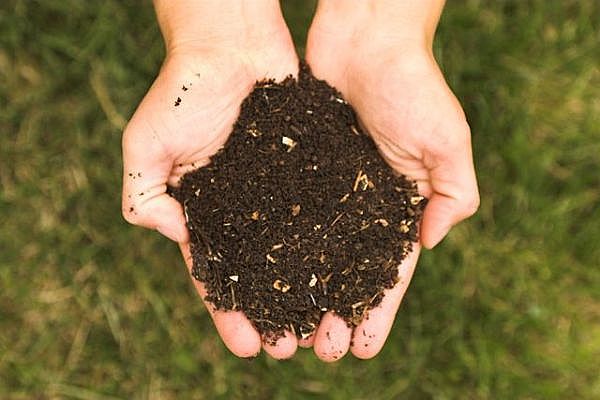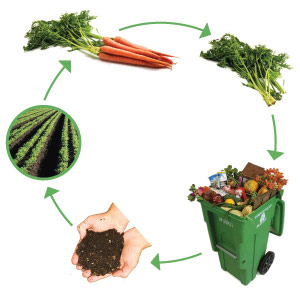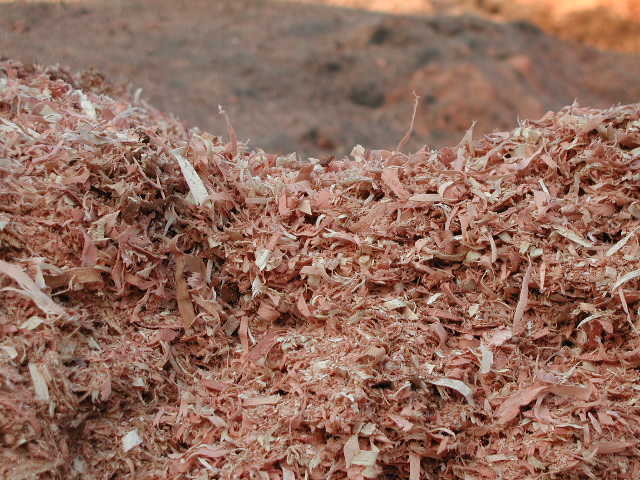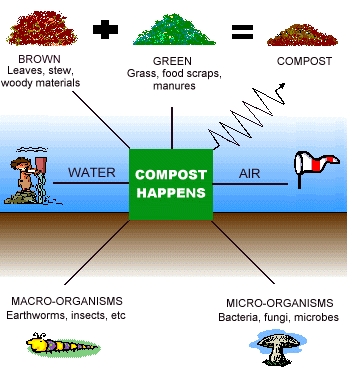
What, Why and How
All about Compost
By Andrea Fowler
(Kŏm'post): A mixture of decaying organic matter, as from leaves and manure, used to improve soil structure and provide nutrients. (American Heritage Dictionary, Fourth Edition, 2009)
What is COMPOST? In simple terms, compost is decomposed organic matter. Organic matter is anything that was once living, was part of something living, or was produced by something living. Fruit and vegetable scraps, grass clippings, manure, leaves, sawdust, eggshells, and straw are all examples of organic matter that can be used to make compost. However, it’s important to know that certain types of organic matter–such as dairy products, meat, fish, bones, fats, oils, pet waste, diseased or insect-ridden plants, or plants that have been chemically treated–should not be used to make compost.



Why COMPOST?
- Compost is a great soil conditioner and provides nutrients for plants, as well as helping to retain moisture in the soil.
- Compost helps to recycle kitchen and yard waste and reduces landfill waste.
- Compost is environmentally responsible because it’s a natural alternative to chemical fertilizers.
- Compost helps aerate the soil, breaks down organic matter, and helps prevent plant disease due to the beneficial microorganisms in it.
- IT’S FREE!
- YOU CAN MAKE YOUR OWN!
How to COMPOST?
First, designate a compost site. The backyard is a great location, primarily for aesthetic and olfactory reasons. Compost bins are often used, but they’re not essential. Make sure the site or pile is large enough to be effective, but small enough to be manageable. Then just follow the recipe! The bottom layer of the compost pile should be bare earth. Next, layer twigs or straw to help with drainage and aeration of the pile. Now alternate layers–moist (ex. food scraps) and dry (ex. leaves or straw). It is important to add manure or any other nitrogen source. Also make sure that the pile stays moist by watering with a hose or sprinkler or by rainfall. When the pile is sufficient, cover it with plastic sheeting, wood, a tarp, etc. The last step is to turn the pile every few weeks to give it some oxygen.
The compost is finished when it’s dark, rich in color, and the original contents should not be distinguishable. Just remember that compost can take anywhere from 3 to 12 months before it’s ready to use.

A few helpful hints:
- Make sure the compost pile has more carbon than nitrogen. A good rule of thumb is one-third green materials (food scraps, manure, lawn clippings, etc.) and two-thirds brown materials (dry leaves, branches, peat moss, eggshells, etc.)
- After adding kitchen vegetable waste, throw some leaves or grass clippings on top of it. This helps keep things balanced, reduces smells and makes your compost bin less attractive to animals.
- Different composting materials will decompose at different rates but they will all break down eventually. If you want to speed up the composting process, chop the larger material into smaller pieces.
Links:
http://www.epa.gov/waste/conserve/rrr/composting/index.htm
http://www.eartheasy.com/grow_compost.html#d
Images:
http://www.blundellblossoms.ca/blog/wp-content/uploads/2009/09/compost1.jpg
http://carolband.files.wordpress.com/2009/07/compost_cycle1.jpg
http://www.evergreensupplyonline.com/pictures/sawdust.jpg
Contact: